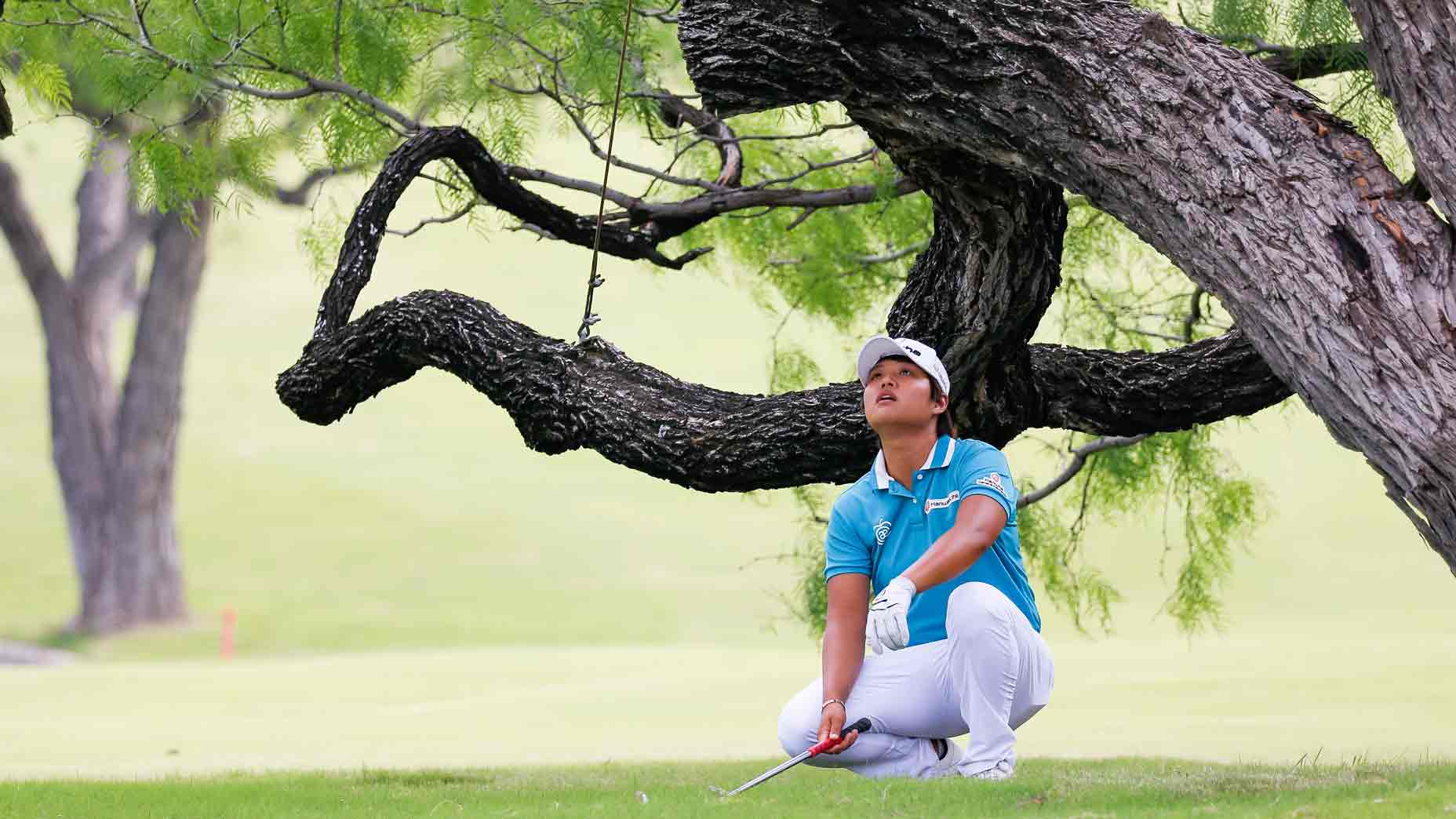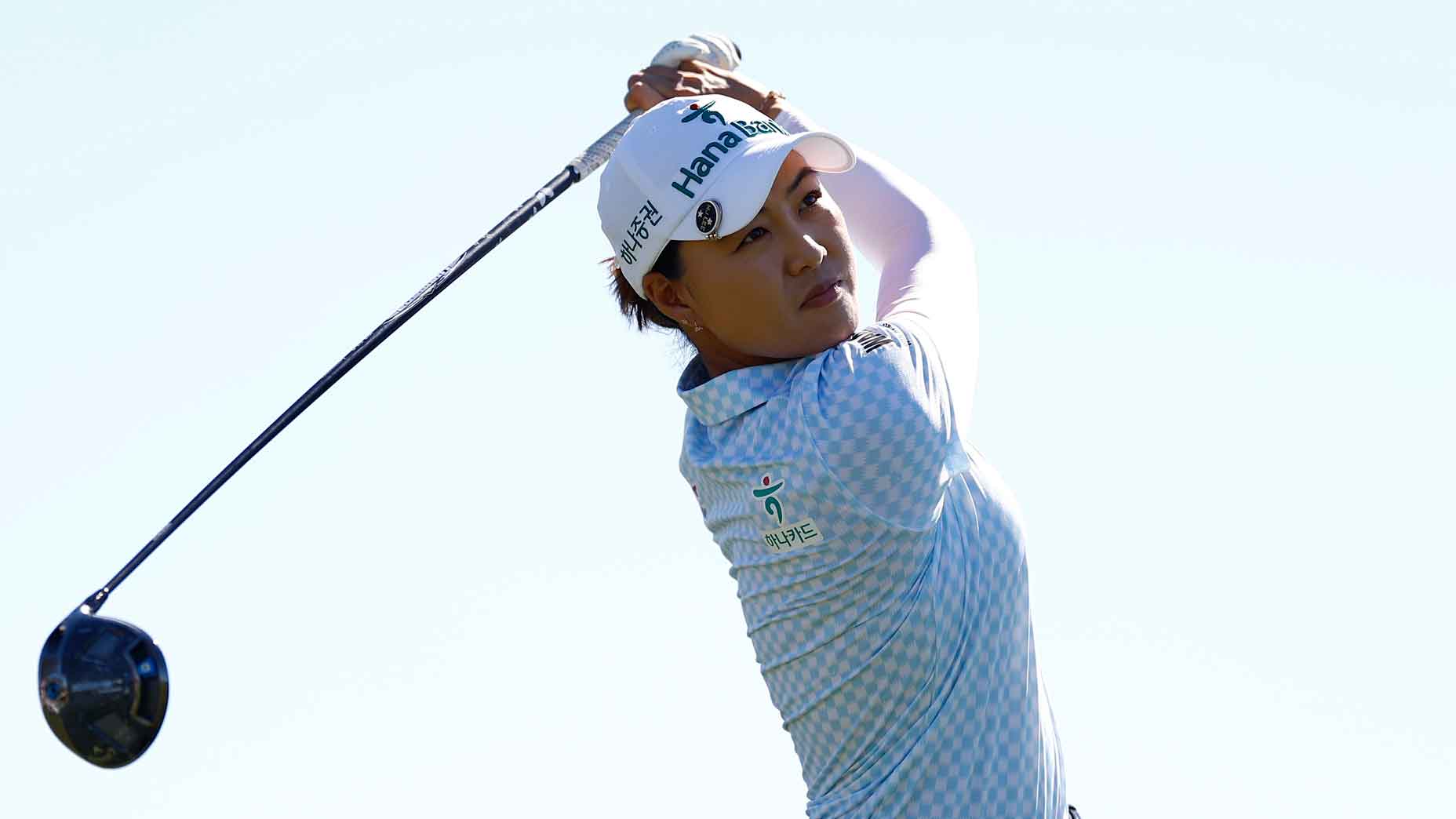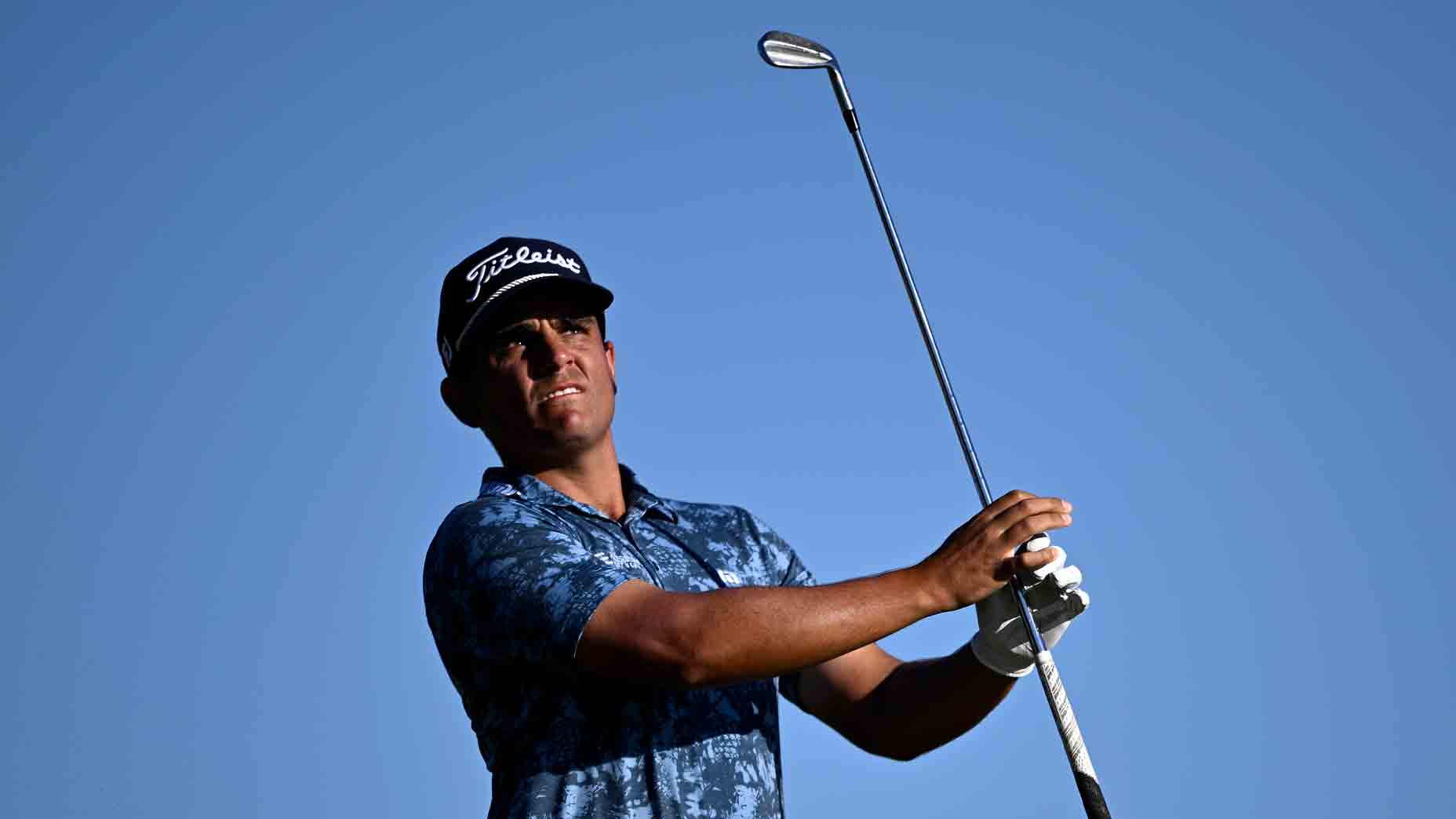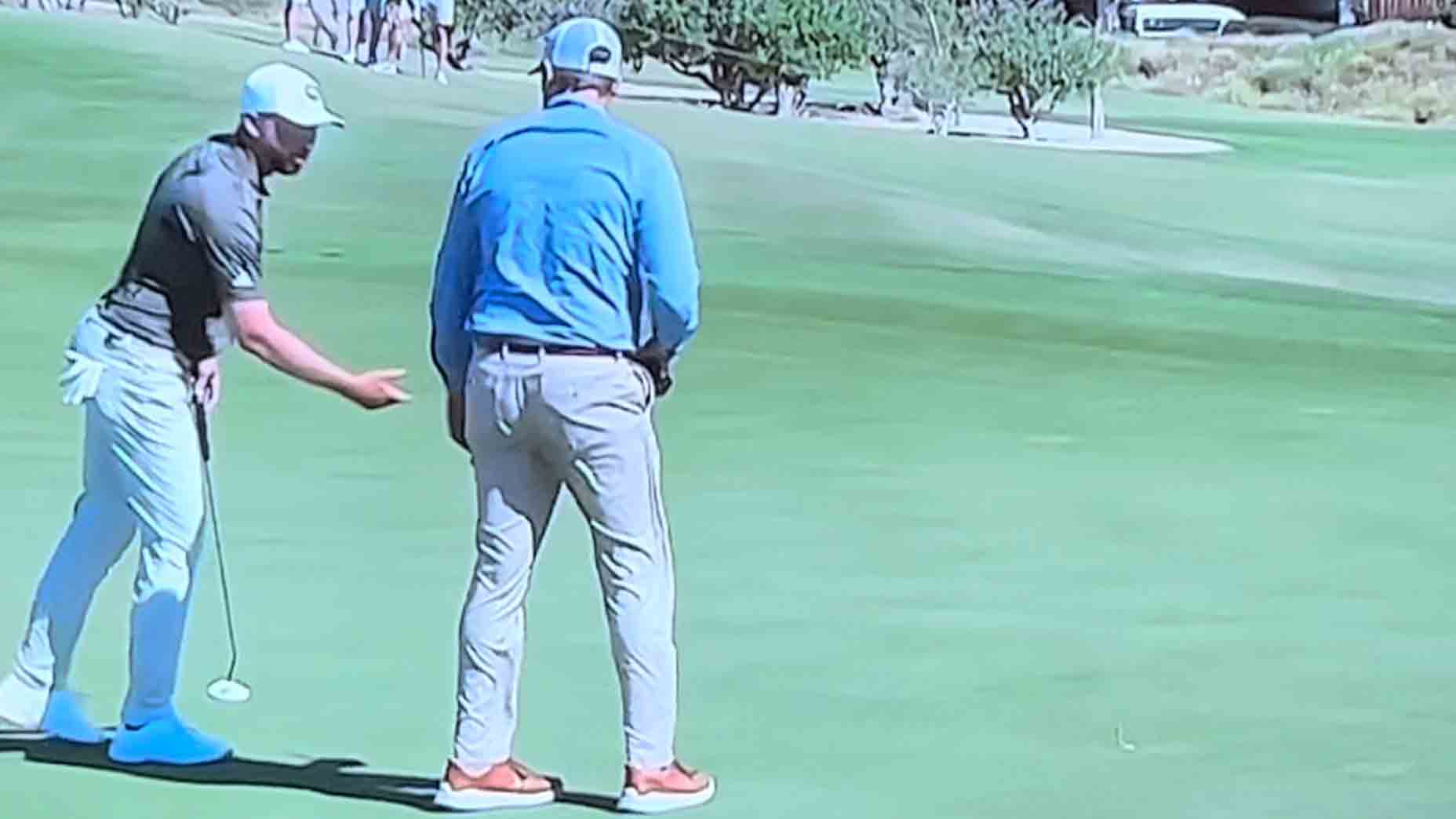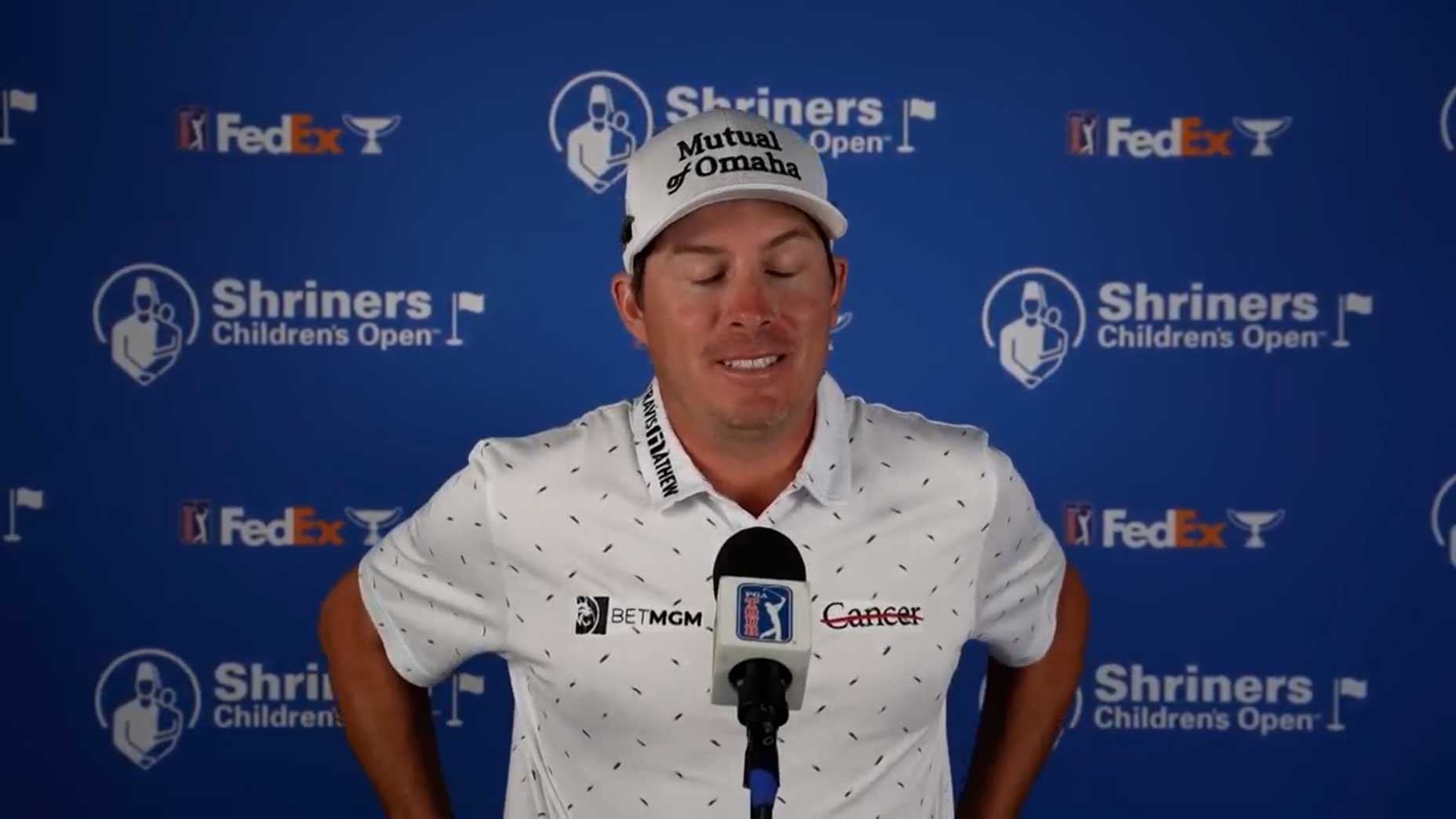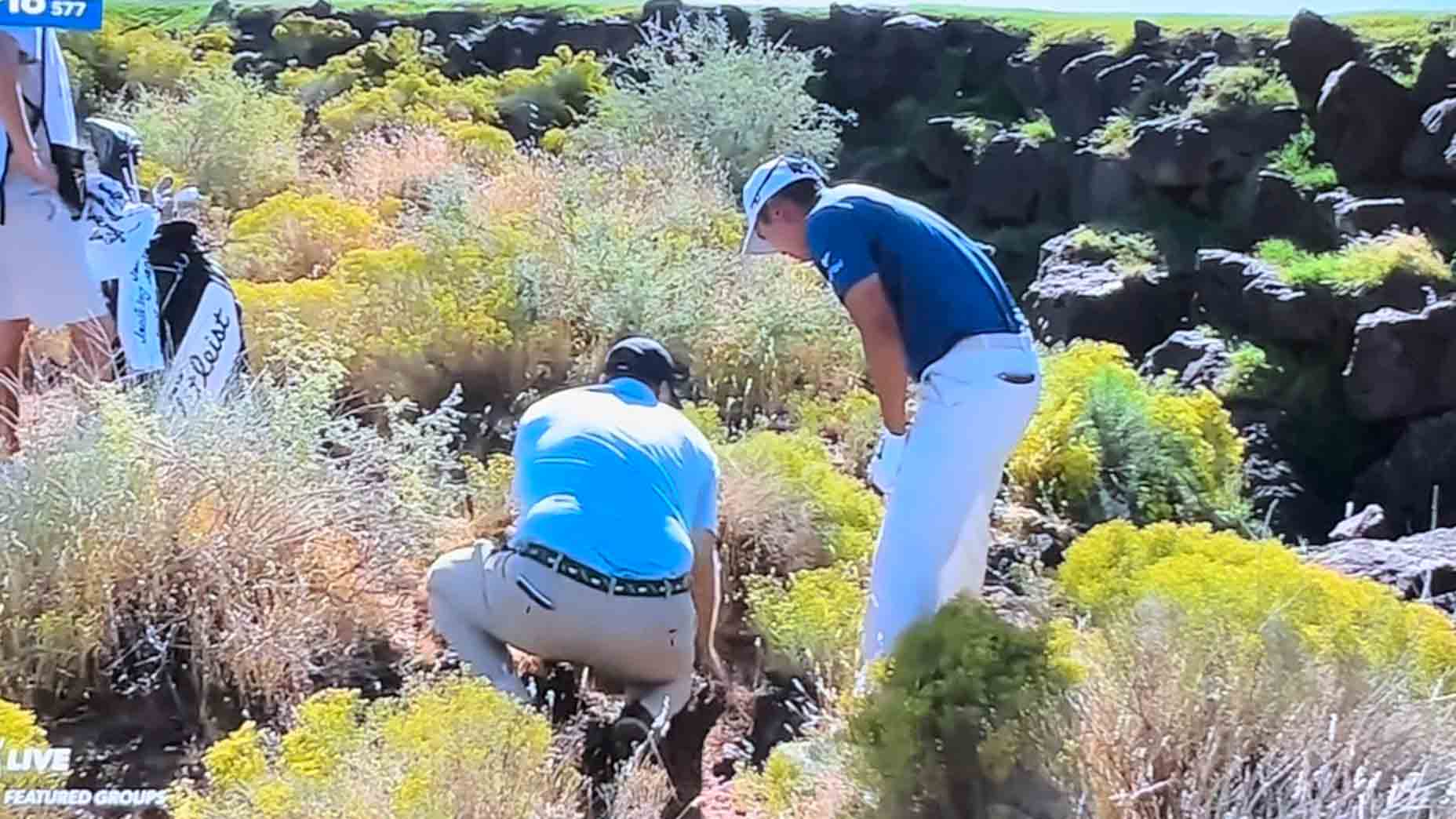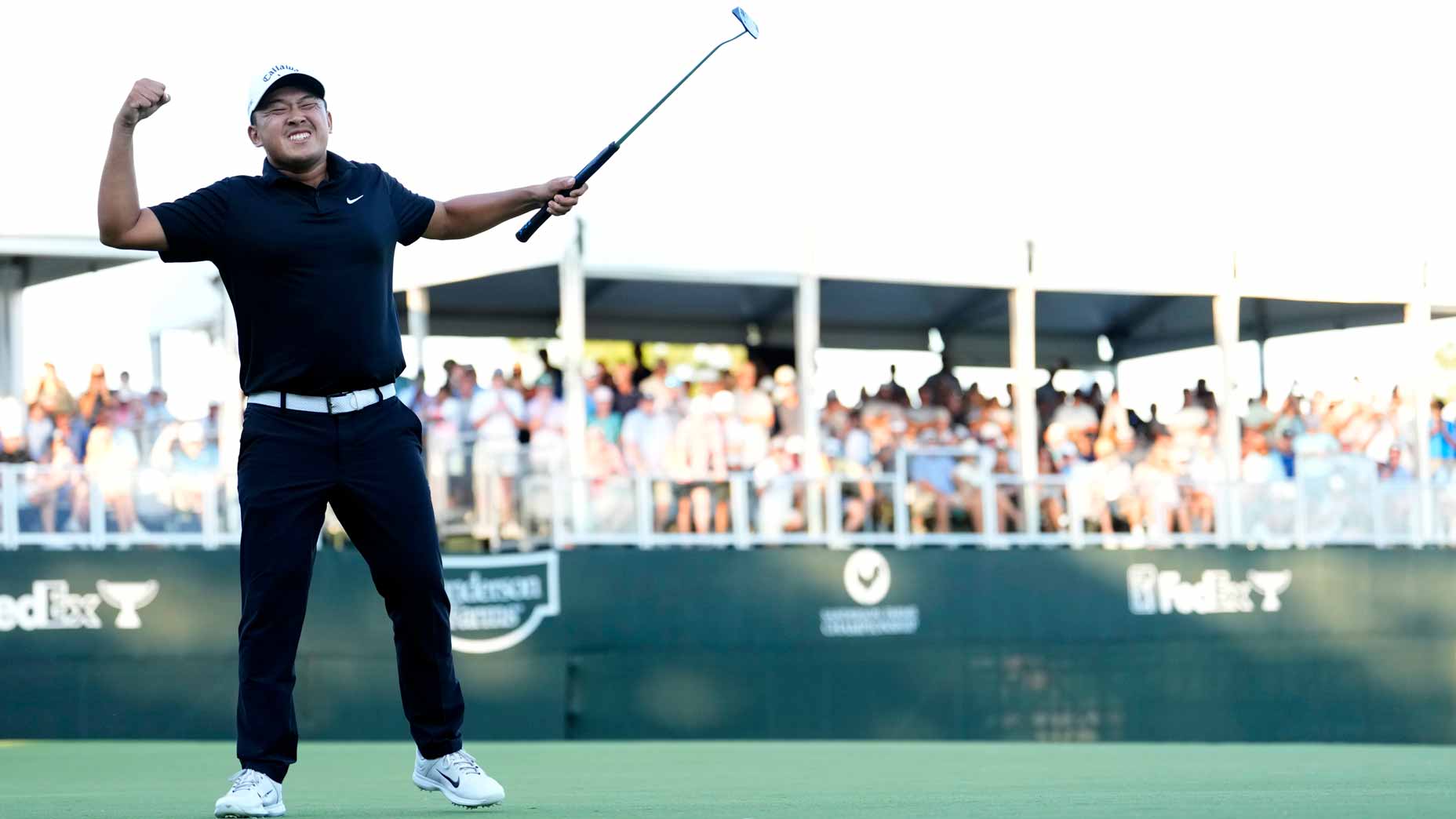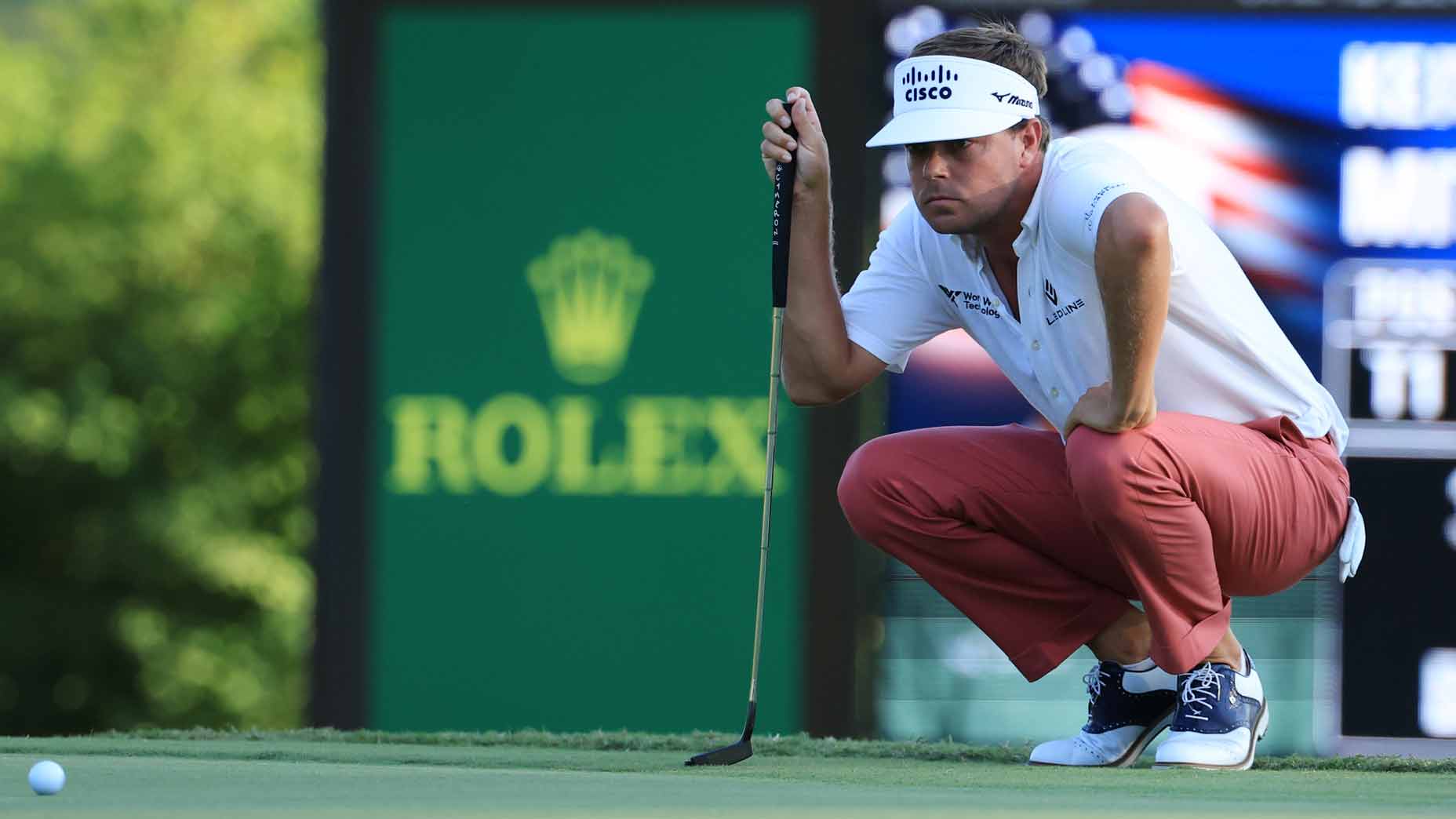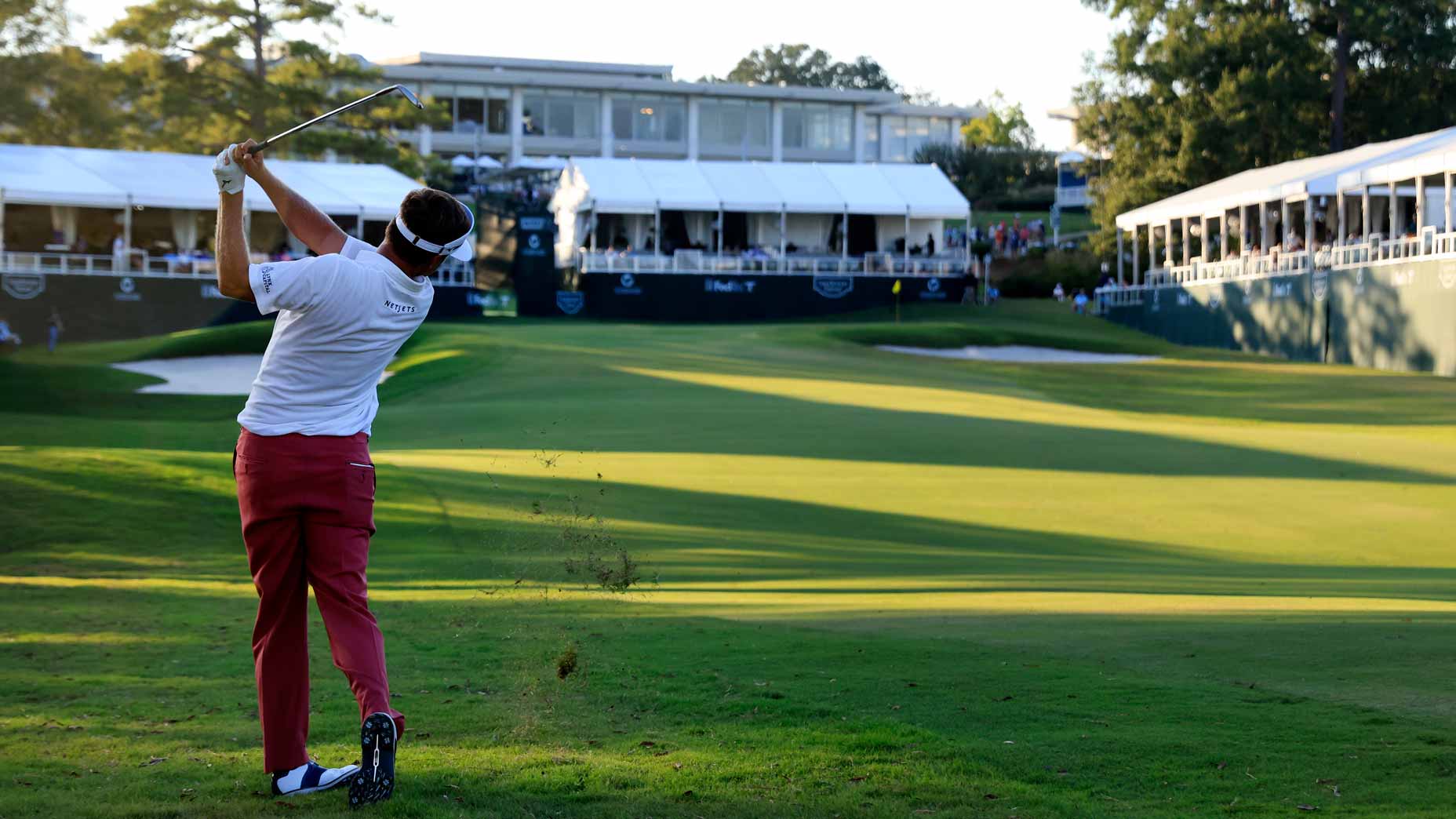‘That kind of stunk:’ Pro’s tee shot negated because of rarely used rule
- Share on Facebook
- Share on Twitter
- Share by Email

Sam Burns on Friday on the 9th hole at the Country Club of Jackson.
PGA Tour Live
Sam Burns was frustrated.
And an analyst was confused.
You may have been too, unless you both had eyes on Burns’ tee shot on the 9th hole at the County Club of Jackson, and you were aware of a little-enacted rule, found deep in golf’s rule book. Notably, Burns himself almost immediately understood the scenario when he asked for a second ball after hitting his first seemingly in play, though that only added to the brief disarray during Friday’s Sanderson Farms Championship second round.
“I don’t mind admitting that I’m a little confused at the moment,” analyst John Maginnes said on the PGA Tour Live broadcast.
A ⚡️ powerful ⚡️ tee shot.@SamBurns66 flexing his knowledge of the rule book. pic.twitter.com/i4j9jQYRCk
— PGA TOUR (@PGATOUR) September 30, 2022
Perhaps understandably so. When a golf ball hits a power line some 50 feet in the air, that’s hard to see.
Though usually the golfer can, and Burns did. He then asked his caddie for a second ball four seconds after his first struck the bottom of three power lines about 50 yards off the tee. No rules official was called to explain Model Rule E-11, which states: “If it is known or virtually certain that a player’s ball hit a power line (or tower or a wire or pole supporting a power line) during the play of (specify hole number), the stroke does not count. The player must play a ball without penalty from where the previous stroke was made.”
Still, Burns wasn’t happy; his ball was tracking toward the center of the fairway. After his follow-through, Burns let go of his driver with his right hand, and his left thumped it to the ground.
On tee shot two, Burns hit left. It was here where Maginnes and other members of the PGA Tour Live broadcast team were wondering why Burns was hitting a provisional, then got word of what happened before Burns hit his approach.
“Well, you’re going to love this,” Maginnes said. “It doesn’t matter where his golf ball is. Because he hit the power line about 20 yards off the tee. As soon as it hits the power line, that ball is no longer in play. You’re required to hit another shot, no penalty. He lays one.”
Rules Guy: My club got tangled in tree branches at the top of my swing. Does that count as a stroke?By: Rules Guy
The sequence happens occasionally — power lines run through several courses, though designers try to take that into consideration. When asked on the broadcast whether he had ever seen something similar, Maginnes said he had, “at a golf tournament on the Korn Ferry Tour in Utah, where power lines went across the 18th hole, and actually same thing happened in a playoff.”
From the left rough on the par-4, Burns hit to 11 feet, and he two-putted for a par, part of a three-under 69 round for the Sanderson defending champ. Burns will start Saturday’s third round seven shots out of the lead.
In his Friday’s post-round press conference, Burns was asked if he had ever hit a power line before.
“Never, no. First time,” he said.
“It seemed like you knew immediately, right away, the rule?” a reporter followed up with.
“Yeah, I think it’s auto re-tee is what I’ve always heard, so that’s what I did,” Burns said. “I guess that’s right.
“What’s that feeling when that happens?” a reporter asked. “It’s got to be a weird feeling.”
“It would have felt better if I would have hit a bad one, but I hit a perfect one,” Burns said. “Then I hit the next one in the left rough, so that kind of stunk, but it is what it is. I know they’re there; there’s always a possibility you can hit them, I guess.”
Latest In Instruction

Nick Piastowski
Golf.com Editor
Nick Piastowski is a Senior Editor at Golf.com and Golf Magazine. In his role, he is responsible for editing, writing and developing stories across the golf space. And when he’s not writing about ways to hit the golf ball farther and straighter, the Milwaukee native is probably playing the game, hitting the ball left, right and short, and drinking a cold beer to wash away his score. You can reach out to him about any of these topics — his stories, his game or his beers — at nick.piastowski@golf.com.

